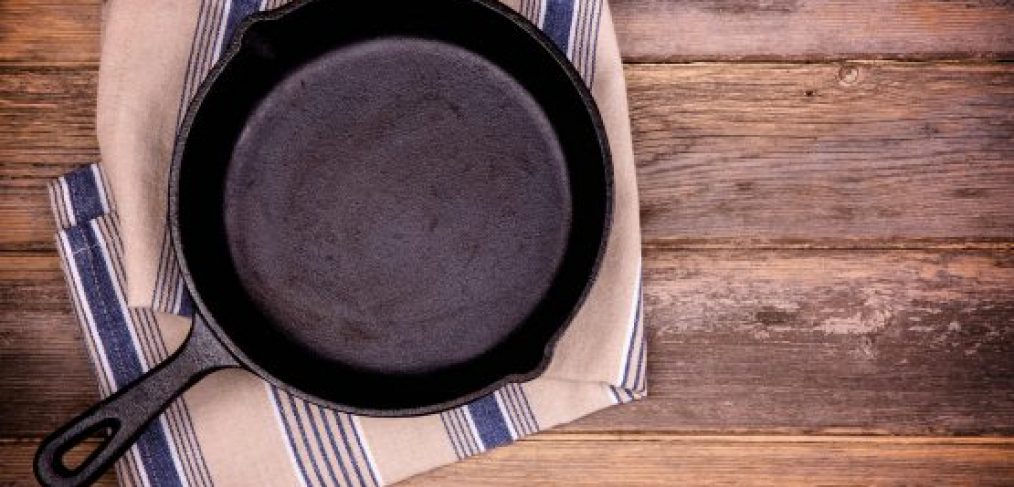Safe Cooking: What’s Sneaking into Your Food from that Non-Stick Skillet?

I get it; no one likes to clean up a messy pan with baked on grease or splattered oil.
So using a handy nonstick surface makes total sense, right?
Err… not so fast.
Did you know that there’s actually a link between many a chemical which is used on skillets, ranging from cheap options at the local wholesalers all the way up to several hundred dollar versions which we may find even at my favorite playground, Williams Sonoma?
t’s true.
According to the non profit organization, the Environmental Working Group, teflon emits toxic fumes when overheated (1).
Non-stick surfaces are metal pans (such as aluminum pans) coated with a synthetic polymer called polytetrafluoroetheylene (PTFE), also known as Teflon, a DuPont brand trademark.
If you’re thinking it’s no big deal to ingest a little PTFE here and there, think again; the toxic fumes from the Teflon chemical released from pots and pans at high temperatures may kill pet birds and cause people to develop flu-like symptoms (called “Teflon Flu” or, as scientists describe it, “Polymer fume fever”).
Even when consumers follow warnings suggestion we need to avoid high heat when cooking with Teflon, tests showed that in just two to five minutes on a conventional stove top, cookware coated with Teflon and other non-stick surfaces could exceed temperatures at which the coating breaks apart and emits toxic particles and gases.
And even worse, it’s not just the person doing the cooking (and eating) that is affected and it’s certainly not just a short term issue; chemicals from this family are associated with smaller birth weight and size in newborn babies, elevated cholesterol, abnormal thyroid hormone levels, liver inflammation and weakened immune defense against disease.
What’s the answer?
That’s easy! Good old cast iron. As much as I love cooking and have invested in beautiful stainless steel (also safe), the number one thing in my go-to daily arsenal is my Lodge cast iron skillet… which I bought from a local mom and pop hardware shop for $25!
Don’t get me wrong- there is absolutely nothing wrong with beautiful add-ons such as Calphalon or All Clad, which I would go so far as saying are works of art, if your price point is a tad on the more budget-friendly side, there’s no other way to go than cast iron.
Plus, cooking in it will add iron to your food!
According to The Chopra Center, a study published (2) found that the iron content in 100 grams of sauce jumped from 0.6 mg to 5.7 mg after being cooked in a cast iron pot. This is particularly helpful to those who may be finding their way out of a vegan diet towards one which includes some animal protein, which a better source of heme (blood) iron.
Head to your local hardware store or head over to amazon and get your Lodge on today!
(1) “Skip the Non-stick to Avoid the Dangers of Teflon.” EWG. Environmental Working Group, n.d. Web. 18 Jan. 2017
(2) “Health Benefits of Cooking with Cast Iron.” The Chopra Center. N.p., 13 Sept. 2016. Web. 18 Jan. 2017






Hi Nell,
How do you clean your skillet?
Hi, Dora! Actually the cast iron skillet does not need to be cleaned after each use the way another type of skillet would. Just keep it seasoned properly and then you can wash by hand with very hot water and a stiff brush. Then dry right away, then rub oil into it to season it again. I would not recommend olive oil, though, since it has a low smoke point. I use coconut!